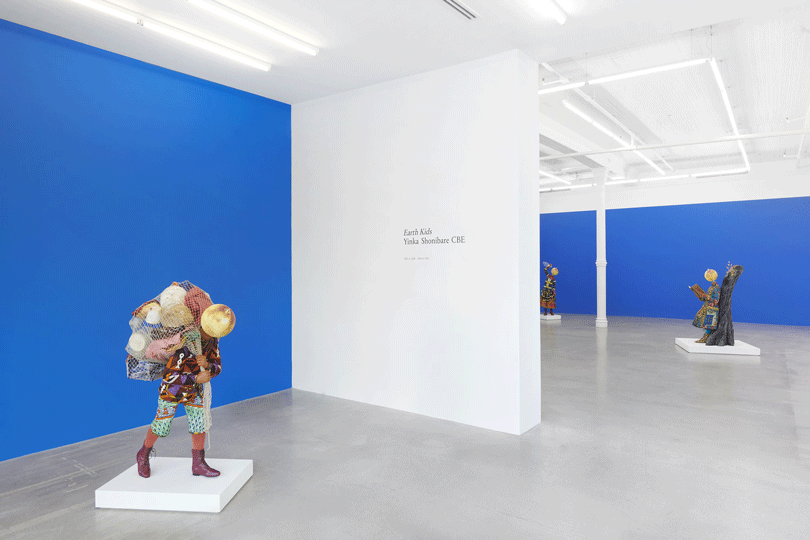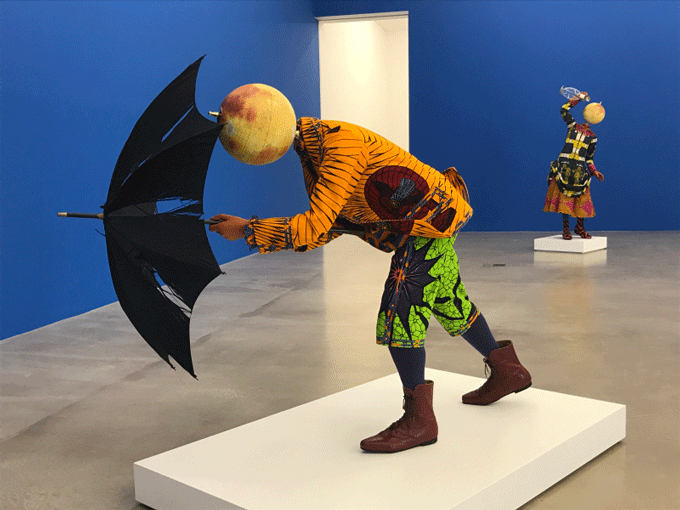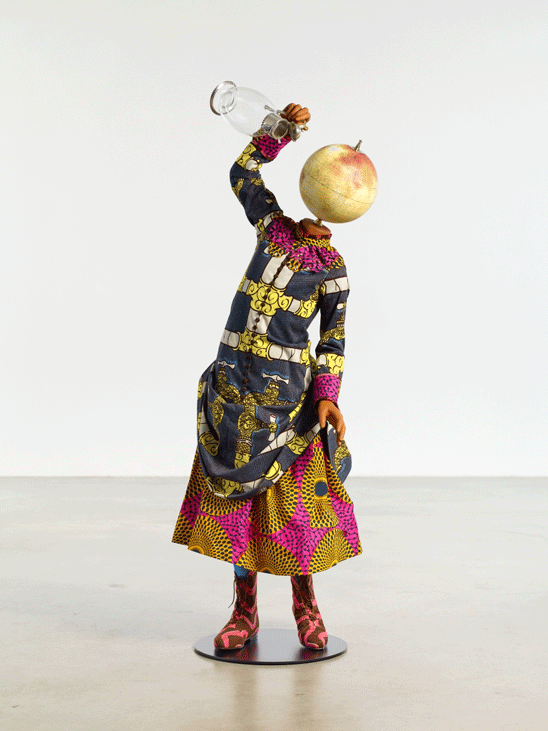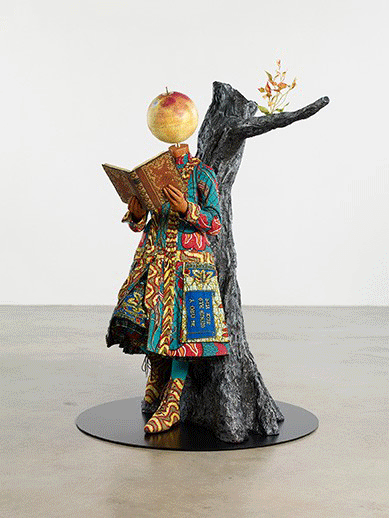“Art, like philosophy, can start a debate and can change thinking. And what we then hope is that that thinking becomes political, and then becomes policy.”
This is a statement levelled by Yinka Shonibare, one of the most celebrated British-Nigerian artists in the world, concerning the topic of one of his latest exhibitions, Earth Kids, at the James Cohan gallery in January 2021. Though it may seem to be a grandiose statement, it trails behind a long history of art having a powerful impact on the discussions and direction of change in society. One doesn’t have to look far to see the impact of artworks such as Picasso’s Guerinca, the powerful paintings on the Berlin Wall in the 80s, the portraits of royal leaders or propaganda imagery in telling us in society about where we are, who we are and perhaps how we should be.

According to Shonibare’s installation, Earth Kids, and many policymakers, humans and societies are currently continuing on a pathway of climate and environmental disaster much to the detriment to the lives of children. Following in line with the United Nations Sustainable Development Goals (SDGs) on Climate Action and Life on Land, the Earth Kids sculptures are a direct visual representation of the situation children will soon find themselves in.
According to the latest Intergovernmental Panel on Climate Change (IPCC) report on Climate Change and Land, “Climate change has already affected food security due to warming, changing precipitation patterns, and greater frequency of some extreme events.”
In his sculptures, Shonibare tries to make a link between the imperial domination of the planet and the domination of the Earth, such as through the unsustainable and polluting mining of resources, copper and rare earth minerals that has been happening in Africa for over a century.

“The colonization of Africa is somewhat parallel to the colonization of the planet and the climate change issues we are facing now,” says Yinka Shonibare.
He does this by showing how the mass industrialization of the West during the 19th and 20th centuries was not simply done off the back of African nations it exploited to garner resources but is an ongoing process that led to the mass degradation of biodiversity, pollution of water, endangerment of species and change in the climate. The African Empires that were eradicated because of Western imperialism were going under the same boot of unhinged and blinded human domination of the planet and its resources.

Shonibare ties this link he makes between colonization and environmental disaster by dressing his sculptures in African textiles. Like his previous artworks, Earth Kids uses his famous signature technique of making Victorian outfits out of batik. Batik is an African textile of Indonesian influence produced by the Dutch and sold to the West African market. However, in our contemporary day, they are associated with African culture and fashion, and even now produced on the African continent.
Even more, the iconoclasm of diverse cultures and influences in Shonibare’s work delivers a strong message of the common and converging histories that create the human story, no matter race or ethnicity. In the case of our environmental disaster, it shows the common burden children from around the world share.
He uses a globe depicting the warming of our planet Earth as the kids' heads to highlight both universality and climate change, and one of the children carries a load of marine trash on their back. The fact itself that modern-day children are wearing Victorian clothes shows the continuity of the ecological burden kids must carry from the Industrial age until now.

One of the sculptures in the series is called ‘Fire Girl’, inspired by Francisco Goya’s print series The Disasters of War and Greta Thunberg's activism. He links Goya’s critique of the effects of war to his own critique of the effects of ecological degradation by similarly putting the young girl against a burnt-out tree as does Goya’s drawings of war. The sculpture also refers to Greta Thunberg’s activism as a young female climate activist who made headlines in 2019, while the sculpture holds a book depicting a forest fire.
However, although Earth Kids seems to simply be a critique of the dire situation we currently find ourselves in with the next generation left to carry the burden, it also offers a tale of hope. In fact, Shonibare was inspired by the concern, initiative and action of youth activists in garnering change in policy to create a more sustainable world and hopes that his artwork not only displays this but also can be a part of pushing such a change as well.
To try to do your part to address climate change and environmental degradation, consider donating to Greenpeace International, here. To see more of Shonibare’s works and famous use of batik, visit his website here.
